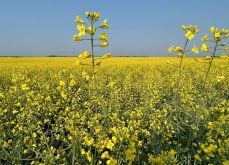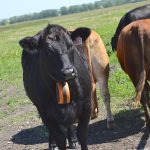Early seeding canola will increase yields most of the time, says an Alberta oilseed specialist, but there are caveats for those in dark brown soil zones.
Murray Hartman of Alberta Agriculture told a Nov. 23 meeting of the Alberta Canola Producers Commission that early seeding will likely pay off on dryland under reduced tillage systems but leads to higher yields only half the time when using direct seeding.
Hartman said early seeding of Argentine canola has been widely adopted, but some producers are thinking twice about its benefits.
Read Also

Why feds imposed EV tariffs
Moe and Kinew have a fight on their hands when it comes to eliminating the EV tariff. Canada has to worry about pissing off the U.S. and Mexico and hundreds of thousands of auto workers.
To answer their questions, he looked at yield data from 2002-12 on dryland in the dark brown soil zone and found an overall benefit from early seeding, though much depends on weather and tillage practices.
Early seeding produced higher yields in reduced tillage systems in seven of the nine years studied but only four out of nine using direct seeding.
“I would say certainly it looks like a real probable for reduced tillage, but for direct seeding, early seeding (first week of May or earlier in the dark brown soil zone), it’s only 50-50.”
Hartman said early seeding generally resulted in higher yields in most other soil zones. He has also recently explored the benefits of soil and foliar applied boron to canola crops.
“It seems to be being promoted more in the last five years than it has in all my previous experience,” Hartman said.
He examined published, independent research on boron that amounted to 44 site-years of data. Yield benefits from boron were the exception rather than the rule.
“If I had to put this into a probable, maybe or unlikely, this is a very strong unlikely,” he said.
“Save your money. Don’t put it on boron. Overall, that’s a very good recommendation.”
Hartman said farmers must carefully sort through the wealth of advertising for canola seed varieties, treatments and agronomic boosts when making cropping decisions.
“It’s kind of hard to filter out the truth from the scams or the misinformation or the doctored trials.”
He told producers to consider whether claims are based on plant function or plant content.
“I don’t care what the plant has. What does it need? Try to ignore those ones that are based on function claims.”
Hartman said data from unbiased, independent research in Western Canada should be given more weight than claims from those with a vested interest, although the latter should be reviewed as well.
Results from at least 20 location years of data are best and should ideally come from more than one region on the Prairies. A response is worth considering if it’s positive more than half the time.
“I like to try to keep it simple and say this is a probable, a maybe or an unlikely.”
















